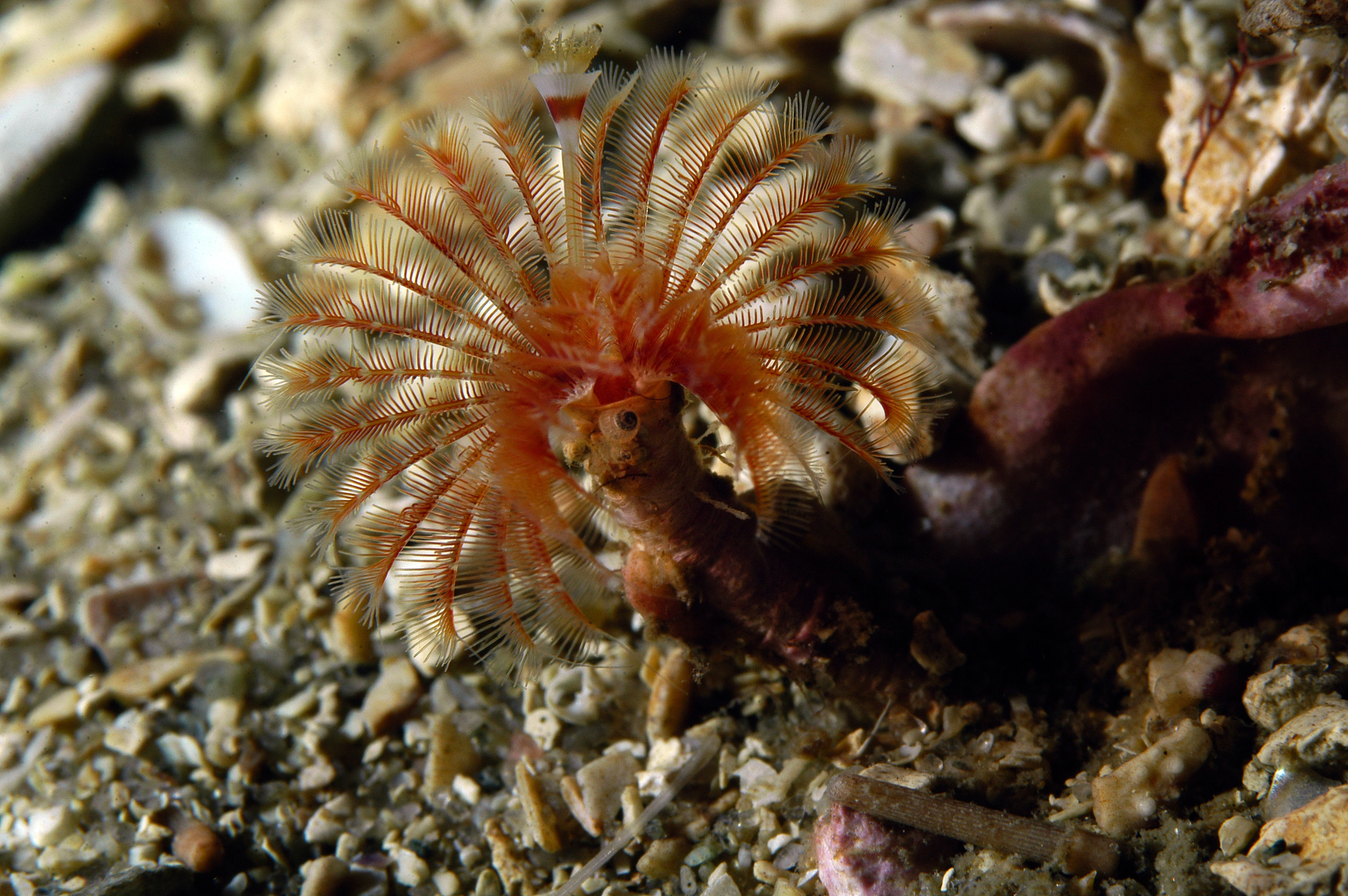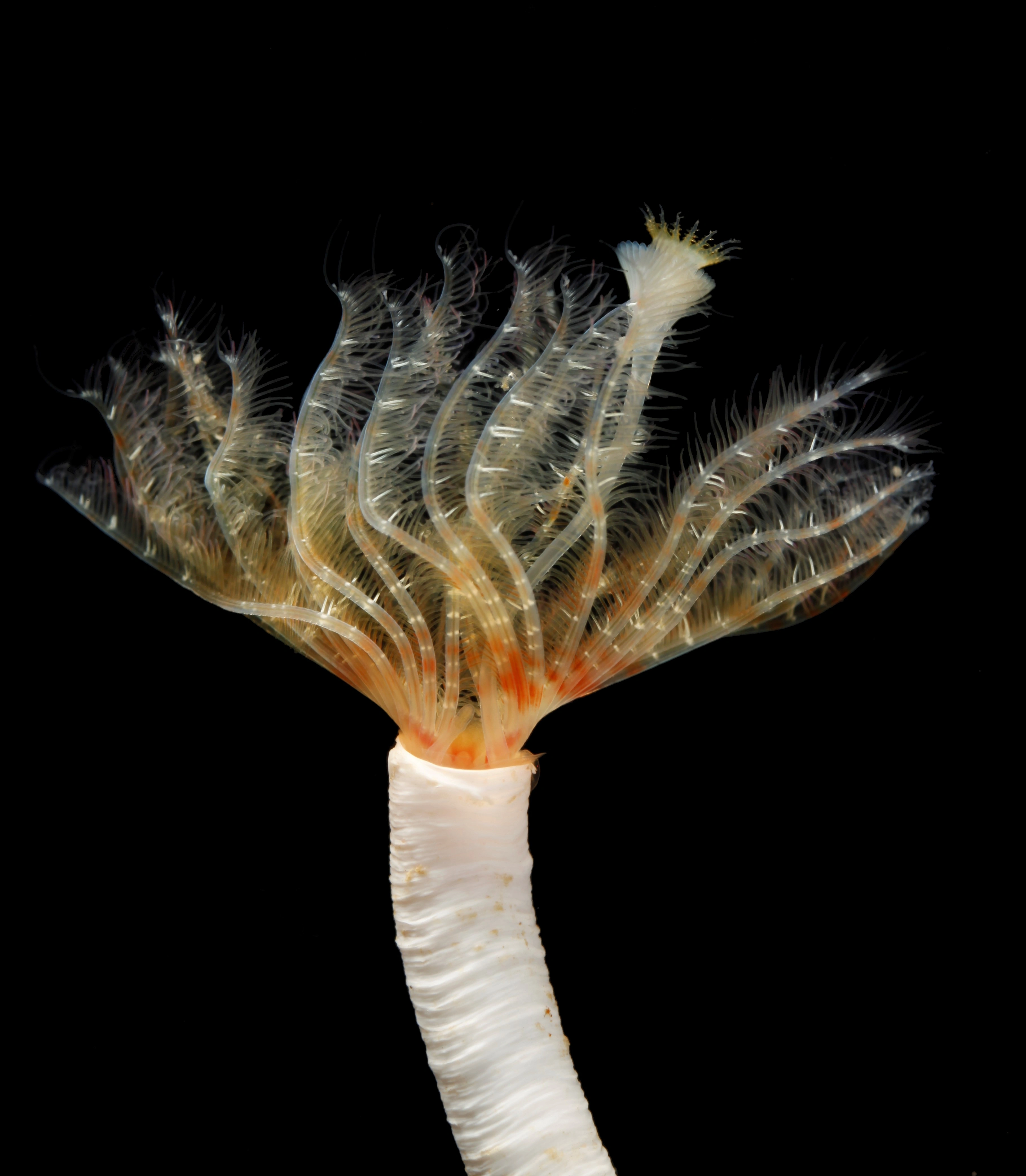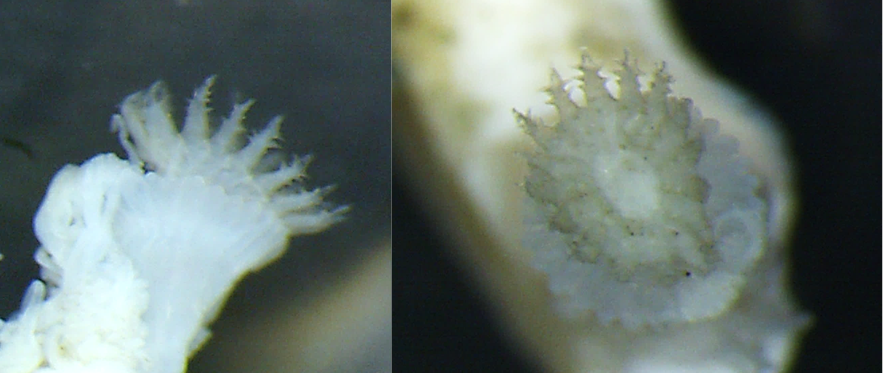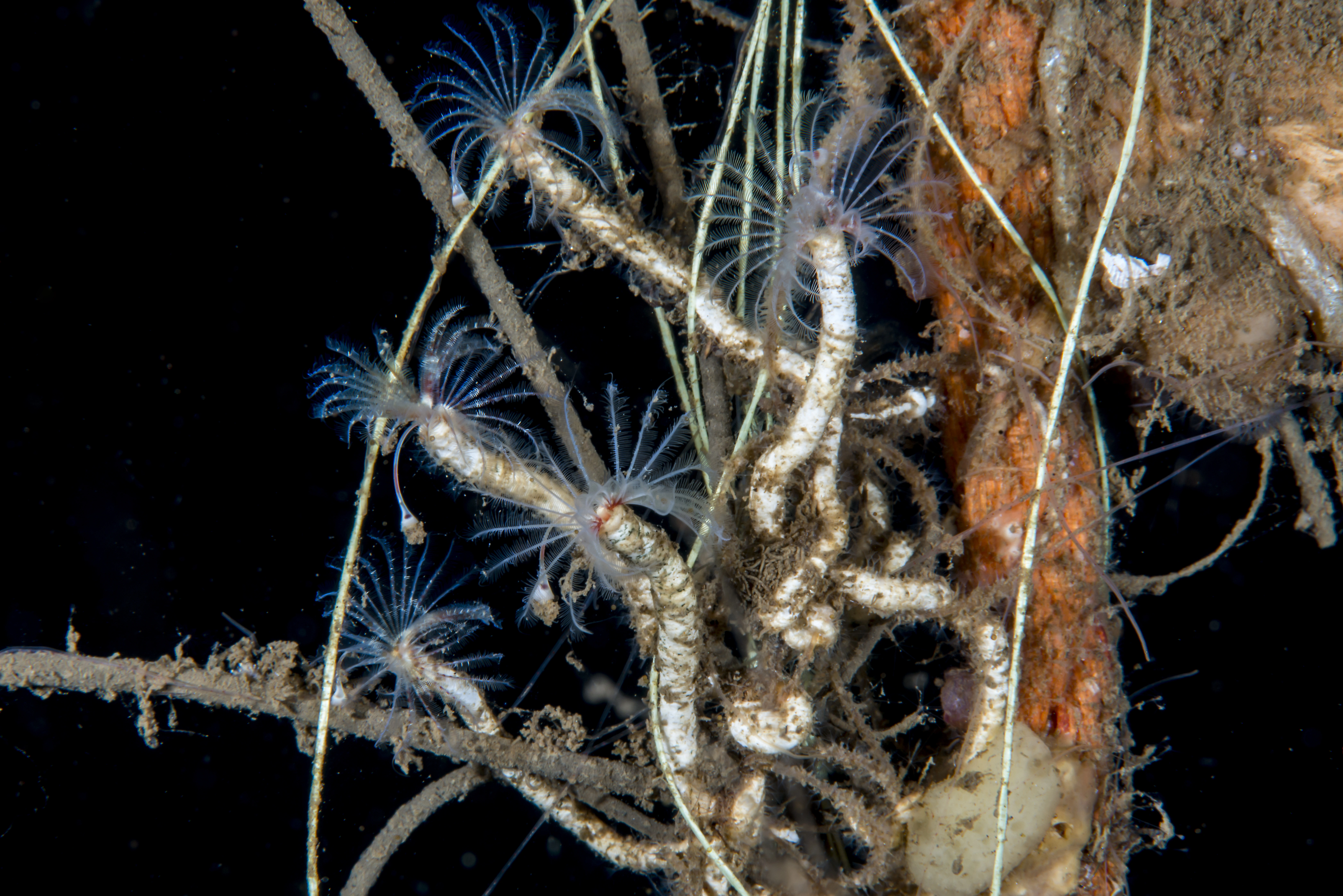Hydroides norvegica
Hydroides norvegica
This is one of the most common serpulids in Norway. It belongs to the family Serpulidae, which are identifiable by their calcareous tubes. Hydroides norvegica is found in shallow waters attached to hard substrates or to other organisms. In Norwegian ports, this species is found on artificial surfaces or growing on other organisms such as kelp holdfasts, sometimes in high densities.
- Innhold
- Measurements
- Characteristics
- Look-alikes
- Biology, ecology and behaviour
- Habitat
- Recommended citation
Hydroides norvegica, showing the two-tier operculum with a chitinized crown.
Hydroides norvegica out of its tube.
Measurements
Hydroides norvegica, anterior end showing calcareous tube with some minute concentric sculpture, radiolar crown with white bands and operculum.
Up to 3 cm long. It has eight thoracic and several abdominal segments.
Characteristics
Hydroides norvegica secretes a white and cylindrical calcareous tube that can be completely attached to a surface, creating irregular shapes, or have an erected and unattached anterior end. There are no keels or longitudinal ridges on the outer tube but only some concentric microsculpture. The colour of the radiolar crown is variable, but generally shows transverse reddish and white bands. The body is red when the worm is alive. The operculum, a lid that closes the tube when withdrawing, has two tiers, a basal funnel of fused radii and a distal crown of chitinized spines with lateral teeth. The peduncle of the operculum is cylindrical, smooth and without wings. Pseudoperculum, a smaller operculum ready for replacement of the original if it gets eaten by a predator or damaged, can be present. The thoracic membranes form a ventral apron on the last thoracic segment. The first chaetiger has chaetae with two large and smooth subapical teeth without accessory denticles and a smooth tapered distal part.
Hydroides norvegica, opercula from side and frontal view.
Look-alikes
Members of the genus Hydroides are easily recognizable from other serpulids by the smooth cylindrical tube and operculum with two tiers. The distal tier is amber in colour and is decorated with a crown of spines and sometimes additional lateral teeth. There are no other Hydroides species reported from Norwegian waters.
Biology, ecology and behaviour
This species is a sedentary tubeworm. It is very common and abundant in fouling communities and early colonizers of artificial substrates. Their tubes are often covered by other organisms such as red calcareous algae, hydroids or bryozoans.
Habitat
This species is found attached to hard substrates. It is common in the eastern Atlantic, and mainly found in northwest Europe.
Hydroides norvegica
Recommended citation
Capa M. Hydroides norvegica Gunnerus, 1768. www.artsdatabanken.no/Pages/313091. Downloaded <year-month-day>.





